
kscarbel
-
Posts
1,114 -
Joined
-
Last visited
-
Days Won
8
Content Type
Profiles
Forums
Gallery
Events
Blogs
BMT Wiki
Collections
Store
Posts posted by kscarbel
-
-
WSJ / June 10, 2013
PARIS—Michelin said on Monday it would close a truck-tire factory in France and another in Algeria as Europe's prolonged economic downturn punctures demand for new trucks and replacement tires.
The family-controlled French tire maker will book a €135 million (US$178.5 million) restructuring charge in the first half as it concentrates its truck-tire production at its remaining French facility.
Demand for truck tires in Europe is running 25% below the pre-crisis level of 2007, said Michelin, whose tire plants are operating at about 60% of capacity.
World-wide demand for tires from truck makers also is down, falling by 1% overall in the first quarter. Markets in Europe, North America and the Middle East and Africa were down 3%, 12% and 18%, respectively, in the period, according to Michelin's estimates. However, the South American market expanded by 23%. Michelin's truck-tire sales fell 5.6% by volume and 8.6% by value world-wide in the quarter.
Overall sales of heavy-goods vehicles for the year's first four months fell 14%, according to the Association of European Auto Manufacturers. Swedish truck builder Volvo AB's truck deliveries in Europe were down 7% in April from a year earlier. MAN AG, the German truck maker controlled by Volkswagen AG, warned earlier this month that it won't hit its profit-margin targets partly because of Europe's economic malaise.
The Michelin announcement comes at a sensitive time in France as the Socialist-led government of President François Hollande is under pressure to reverse a trend of rising unemployment as economic growth stalls. Michelin ran into a political storm when it announced job cuts in 1999 during the previous Socialist-led administration of then-Prime Minister Lionel Jospin.
"Michelin is determined to maintain a strong and lasting industrial presence in France," the company said. But it intends to continue to reorganize its industrial operations in France by consolidating plants.
The tire maker said it plans to pump €800 million into its activities in its home country through 2019 by developing other production sites, with €220 million earmarked for its research and development center at Clermont-Ferrand, in central France.
Michelin said it would close its truck-tire plant at Joué-lès-Tours, in central France, and shift the factory's production to another French plant at La Roche-sur-Yon, where the company will invest €100 million to retool and raise production capacity to 1.6 million tires a year, of which 75% will be exported.
The Joué-lès-Tours plant employs 930 workers, of which 200 will be kept on to work on semi-finished products. Of the remaining 730, 250 will be offered early-retirement options and the remaining 480 will be offered jobs at other Michelin facilities. Those who decline will be offered training to find other jobs.
Michelin said it is closing its truck-tire plant in Algeria, which will be sold to Cevital, a private company. The French tire maker said the plant is too small to be competitive and doesn't have room to expand.
Michelin recently confirmed its full-year objectives for 2013. It aims to achieve stable operating income before nonrecurring items, a more than 10% return on capital employed and positive free cash flow.
-
Looking to fix a/c on my superliner . Anyone all ready replaced there compressor on a E-9. What bolted up easily?
Was your Volvo/Mack dealer (or Watt's Mack Sales) unable to provide you with the correct OEM replacement AC compressor?
-
Nice trucks. When did they change the round headlights to the quads?
bullogboy
The RD-800 series had rectangular headlamps throughout its production, while the RM and DM (speaking of the steel nose) had round headlamps.
-
-
Three more Mack RMs for overseas militaries. I apologize for the terrible picture quality but the trucks are impressive.
The Air Force's RM has the air reservoir common to civilian Macks opted with Ingersoll-Rand air starters (http://www.ingersollrandproducts.com/airstarters/pdfs/f-237KB.pdf).
Note the roof-mounted heat shield on the second RM, just as British enclosed-cab Mack NRs were fitted with for North Africa.
The last RM with the 300 "Cool Power" hood scoop and 24.00-21 tires is just so impressive..
-
 1
1
-
-
-
-
-
This was a prototype RD-8886SX submitted by Mack Trucks to the IDF in competition with Autocar, MAN (who won the tender) and Mercedes-Benz for transporting 60 plus ton Merkava main battle tanks. After failing to get the sale, Mack sold it to the Singapore Armed Forces (SAF).
Note the cab roof heat shield and the European style convex main mirrors in lieu of the U.S. style (at the time) flat glass mirrors.
-
 1
1
-
-
- Popular Post
The IDF ran Mack Trucks for years, beginning with the B-model.
At least thru 2010, the Israeli Defense Force had retained many of its DM-800 tank transporters in reserve even though many were up to 40 years old (At least some are being sold off now).
Photographs are limited, but here are a few in addition to those already posted on BMT elsewhere.
http://www.bigmacktrucks.com/index.php?/topic/16857-army-truck-mack/
Note: The IDF was a large Autocar customer as well.
The Sherman tank in the third picture is no ordinary WW2 Sherman. It's a M-51 Israeli "Super Sherman" with a French 105mm main gun (note the counterbalance weight added to the rear of the turret), HVSS suspension system (that only late Shermans received) and 15.5-liter Cummins VT8-460Bi 460hp turbocharged V-8 engine. This upgraded WW2 tank was holding its own in the Six Days War and Yom Kippur War.
-
 4
4
-
Fleet Owner / June 6, 2013
Volvo says it will begin limited production of VNL trucks powered by the alternative fuel dimethyl ether (DME) in 2015.
In a related development, Safeway Inc. will begin field testing two VNLs with Volvo D13 engines modified to use the new fuel option under a $500,000 grant from California’s San Joaquin Valley Air Pollution Control District, the truck maker said today at a press conference in the state’s capitol.
DME can be produced from a variety of biomass waste materials or natural gas, offering CO2 reductions of up to 95% compared to diesel. Modifications to the D13 are relatively minor and will not require the use of diesel particulate filters (DPFs), according to Volvo. Handling and storage is similar to propane and does not require cryogenic or high-pressure storage, the company said.
“We decided to test Volvo DME technology in our fleet because it is a natural fit with our sustainability strategy,” said Tom Nartker, VP of transportation at Safeway.
“With the addition of DME-powered vehicles to our previously announced CNG and LNG offering, Volvo’s Blue Power line-up will offer the industry’s most comprehensive approach to the developing North American alternative fuel market,” said Göran Nyberg, president of Volvo Trucks North American sales and marketing.
As part of the California field test, Oberon Fuels will begin commercial production of DME in the Imperial Valley using new skid-mounted, small-scale units.
“Our small-scale process enables the utilization of regional feedstocks to produce DME,” said Rebecca Boudreaux, Ph.D., president of Oberon Fuels. “Cost-effective, regional fuel production addresses the distribution issue, and offers the potential to bypass the need for a national fueling infrastructure, while reducing the carbon footprint associated with transporting the feedstock and the fuel produced.”
Earlier this year Volvo began field testing its first DME-powered VNL in the U.S. with a bulk hauler. Calling the test “highly successful,” Nyberg said customer feedback and early test results led to its decision to begin commercial production of DME-fueled heavy trucks for the North American market.
In addition to the CO2 reduction and handling benefits, DME is similar to diesel in performance and efficiency, according to Volvo. Unlike natural gas, it is a compression ignition fuel that does not require spark or diesel-pilot injection, and it has enough storage density to be suitable for long-haul applications or trucks carrying vocational bodies. It is also non-toxic and is already widely used as an aerosol propellant in cosmetics and other household products, the company pointed out during the press announcement.
The DME fuel systems could eventually be installed on the D13 engines at the company’s Hagerstown, MD, powertrain plant, but initial low volumes will be handled outside of Hagerstown, according to the company. Volvo already offers CNG-powered VNL and VNM day cab models in North America and has previously announced that it will introduce a proprietary LNG heavy-duty engine in VNL day-cab and sleeper models next year.
Note:
Dimethyl ether (DME), also known as methoxymethane, wood ether, dimethyl oxide or methyl ether, is a colorless, slightly narcotic, non-toxic gas. Highly flammable gas at ambient conditions, it can be handled as a liquid when lightly pressurized. The properties of DME are similar to Liquefied Petroleum Gas (LPG). DME is degradable in the atmosphere and is not a greenhouse gas.
DME is entirely in the experimental stage and is only “technically” feasible if the cost of crude oil is above US$100 a barrel. With the lack of an established supply and fueling infrastructure, DME fuel is more likely to be used in niche applications rather than as a wide-scale alternative to diesel fuel.
Volvo has been promoting it because of the funding the program is receiving from the Swedish Energy Agency and 7th Framework Program.
Not wanting to be left in the cold should the technology become available to actually make DME practical, Chemrec (Sweden), Haldor (Denmark), Preem (Sweden) and Total (France) are onboard as investors.
Under political pressure in Scandinavia to also experiment with DME, Scania has done an equal amount of experimentation and come to the conclusion that DME is not yet cost-effective and practical.
Because the entire fuel system must be redesigned, the larger emissions reductions DME can yield are offset by the high price and complexity of the necessary fuel storage and injection system including a pressurized fuel tank. Like LPG, DME is stored in the liquid state under relatively low pressure of 73 psi (to limit the number of modifications required to the engine).
DME can be produced from forest products (pulp-mill byproduct), agricultural by-products, organic waste, energy crops and black liquor.
Like methanol, DME contains oxygen and no carbon-carbon bonds. But unlike methanol, DME has a high enough cetane number to work a compression-ignition (diesel engine) fuel. Also unlike methanol, DME is a gas at ambient temperature and pressure, so it must be stored under pressure as a liquid similar to LPG (liquefied petroleum gas).
When used as a diesel fuel, DME provides reduced PM and NOx emissions, but increased CO and HC.
DME is produced by converting natural gas, organic waste or biomass to synthesis gas (syngas). The syngas is then converted into DME via a two-step synthesis, first to methanol in the presence of catalyst (usually copper-based), and then by subsequent methanol dehydration in the presence of a different catalyst (e.g. silica-alumina) into DME.
DME can also be produced through direct synthesis using a dual-catalyst system causing both methanol synthesis and dehydration in the same process unit, with no intermediate methanol separation. The licensors of this process, by eliminating the intermediate methanol synthesis stage, claim efficiency advantages and cost benefits.
Currently there’s only one DME plant in the world, a demonstration facility in Piteå, Sweden from 2010. It’s the first gasification plant worldwide producing high-quality synthesis gas based on 100% renewable feedstocks. The raw material used is black liquor, a high-energy residual product of chemical paper and pulp manufacture which is usually burnt to recover the spent sulfur.
With good ignition quality and a high cetane number, DME can be used as a diesel fuel substitute. But DME has two issues. Compared to diesel fuel, DME has a lower viscosity (insufficient). Also, because DME does not provide sufficient lubrication to the injection system, a lubrication additive must be added. Volvo chose Lubrizol LZ539N but was also challenged by blending problems.
For safety reasons, ethyl mercaptan was added as an odor additive, as DME has no noticeable odor (Ethyl mercaptan is used as an odor additive in LPG)
Volvo was challenged in trying to minimize the use of the lubrication and odor additives to avoid a negative impact on exhaust emissions, while still providing adequate lubricity for the fuel system.
So DME's lack of lubricity seems to be a key issue. It’s a trade-off between an engine with a well-lubricated fuel system that doesn’t meet the DME hopeful’s emissions expectations versus a low emission engine that will have a high maintenance injection system.
Pros:
- High Thermal Efficiency = Equal to direct injection diesel
- Compression Ignition = about 60 cetane number
- Smokeless Combustion = nearly zero PM
- High EGR Tolerance = NOx can be reduced
- Combustion Noise Reduced
- LPG Infra can be Used = Liquefied at 5∼6 bar
Cons:
- Low Lubricity & Viscosity = Wear & Leakage Problems
- High Compressibility = Difficult to Injection Control
- Elastomer Attack = Sealing Problem
-
Bloomberg / June 7, 2013
MAN Chief Executive Officer Georg Pachta-Reyhofen said an offer from Volkswagen to purchase the rest of the German truckmaker below the current market value is fair given the poor economic conditions in Europe.
“MAN SE considers the current valuation to be relevant and appropriate,” Pachta-Reyhofen said in a speech at the Munich-based company’s shareholders meeting yesterday. “The prospects for the MAN group in 2013 have been affected by the decline in economic growth expectations.”
Volkswagen gained shareholder approval at the meeting for a profit transfer and domination agreement, which eliminates the need for arm’s length negotiations between the companies and gives the carmaker access to MAN’s cash. The vote was never in doubt because VW’s voting stake of just over 75 percent gave it sufficient muscle to push through the plan.
VW, which is required under German law as part of the agreement to offer to buy out minority owners, is proposing purchasing the truckmaker’s remaining stock for 80.89 euros ($107.09) a share. Investors who don’t accept the cash deal will receive an annual dividend of 3.07 euros per share.
Ferdinand Piech, supervisory board chairman at VW and MAN, said yesterday he expects a long legal dispute with minority shareholders, who may file suits seeking a higher price for MAN’s stock.
“We’ll see each other in front of a court for a long time -- that’s what I assume,” Piech said after several lawyers, including Dusseldorf-based Peter Dreier from law firm Dreier Riedel Rechtsanwaelte, raised doubts over MAN’s valuation.
MAN shares dropped 4 cents, or 0.1 percent, to 84.17 euros as of the close of trading in Frankfurt yesterday. The stock has gained 4.2 percent this year, valuing the German manufacturer at 12.4 billion euros.
Closer cooperation is crucial to VW’s effort to jump start a stalled seven-year effort to forge Europe’s biggest truckmaker comprising MAN, Sweden’s Scania and its own commercial vehicles unit. Slumping demand for trucks in Europe, MAN’s largest sales region, and ill-fated business decisions by the truck manufacturer have added urgency to VW’s efforts.
MAN on Tuesday forecast its return on sales will fall “significantly” this year because of higher charges related to a power-plant deal, “substantial” tax risks and weaker after-sales business for its turbo and diesel unit. In the first quarter, MAN reported an operating loss of 82 million euros. Pachta-Reyhofen said yesterday he saw no reason to spin off the power engineering unit.
“The era of a proud MAN is coming to an end,” Daniela Bergdolt, a representative of the DSW shareholder organization, said in a speech. MAN’s weak results and profit warning were aimed at keeping the company’s valuation low to avoid a higher offer, she said. “You should be ashamed.”
VW has been seeking a heavy-truck alliance since buying an MAN stake in 2006, a move that thwarted MAN’s own effort to take over Scania, which VW partly owned. VW gained a controlling stake in Scania in 2008. MAN and Scania will remain separate brands, Pachta-Reyhofen said.
“VW’s approach seems to be sensitive to national/corporate identities – so I think we’re playing the long game on this,” Max Warburton, a Singapore-based analyst at Sanford C. Bernstein, said in an e-mail. “Only when they re-tool and have genuinely common chassis and engines can we expect big savings. That is still quite a few years away.”
Demand for trucks over 3.5 tons in the European Union tumbled 14 percent in the first four months of 2013, according to industry association ACEA. MAN said yesterday it sees no signs of a significant economic recovery in 2013 and will continue to reduce costs in production, sales, administration and development. The company may also reduce work hours at plants in the second half because of the weak market, the CEO said.
“The market environment in Europe is difficult and will remain difficult in 2013,” Bernd Heid, a Cologne, Germany-based partner at McKinsey & Co, said in a telephone interview. “We anticipate a recovery in 2014 at the earliest.”
-
D-Day, certainly history of bravery and sacrifice that must never be forgotten.
The D-Day casualty figures have been estimated at 10,000. A horrible loss of life in any regard. However, all considering, the event went largely in our favor, saving countless lives. Our ruses to deceive the enemy worked better than anyone could have hoped, helped by Hitler’s feeling of insecurity, erratic behavior and incompetence with battlefield tactics. Eisenhower successfully chanced sending the invasion fleet across in horrible weather, and the Germans made many mistakes. We indeed had a great deal of good fortune on that momentous day.
Hitler, Rommel, Rundstedt and members of the High Command thought the Allies would land at Calais, the narrowest distance between England and France. Their assumption was based on phony buildups of Allied troops in the English seaports opposite Calais. As a result, Rommel and Rundstedt positioned the bulk of their troops (15 infantry divisions) around Calais, while a smaller number was stationed 200 miles away near the Normandy beaches (deemed the unlikely landing location). The bulk of the panzer divisions were located north and east of the Seine River, where they were unavailable for counterattack in Normandy.
The Germans also incorrectly guessed that the invasion would come during May’s more favorable spring tides. But the landing never came. With the arrival of bad weather in the beginning of June, the Germans assumed the Allies would not cross the English Channel due to the high winds, rain and heavy seas.
In another stoke of luck, the man most crucial to the Germans on D-Day, Erwin Rommel, spent the driving to La Roche-Guyonan (the result of the Germans having lost air supremacy). Adding to our luck, the front-line German troops were leaderless as most of Rommel's army, corps, division, and some regimental commanders had traveled to a war game in Rennes.
For German field commanders at Normandy, the first minutes of the invasion brought alarm and confusion. The bad weather had interrupted German aerial and seaborne reconnaissance while the French resistance was actively cutting phone lines. Field commanders made urgent phone calls to their generals, who in turn phoned the German High Command. However their ranking officers were away, staying with Hitler at his Berchtesgaden retreat.
The Germans were never able to coordinate a counterattack and, most importantly, Rommel's plans for fighting the D-Day battle were never put into motion.
Another immense benefit to the Allies was Hitler's mistrust of his generals (and the generals’ mistrust of Hitler), which was incredibly damaging to the German command structure.
The only high level German military commander who responded correctly to D-Day was Field Marshal Rundstedt (a veteran officer ironically scorned by Hitler). Two hours before the seaborne landings began, he ordered the two reserve panzer divisions available for counterattack in Normandy (12th SS Panzer and Panzer Lehr) to head toward Caen. His intuitive judgment was that the airborne landings were on such a large scale that they could not be a mere deception and would have to be reinforced be a seaborne landing. And the only beach locations in Normandy suitable were on the Calvados and Cotentin coasts.
But the panzer divisions were under the control of the Supreme Command (OKW), so Rundstedt had to get approval. At 7:30am on D-Day, Rundstedt was informed the two divisions could not be committed until Hitler gave the order, and Hitler was still sleeping. Hitler slept until noon. This event alone saved thousands of lives.
Hitler didn’t give the order for the two panzer divisions to engage until 4 o’clock in the afternoon. And by then, the weather had improved allowing Allied fighters and bombers to provide air support over Normandy, forcing the panzers into hiding.
-
 1
1
-
-
-
Now its a Western Star cab with a Freightliner badge, a Detroit engine, Meritor axles and an Allison transmission tell me Daimler aint cashing in on that.
The Freightliner-badged M915A5 6x4 has a Western Star cab and Australian market Western Star hood. However I believe the chassis is Freightliner.
The M915A5 is produced in Cleveland, North Carolina, a Freightliner manufacturing location for the Cascadia, Century Class, Columbia and exported Argosy II COE.
No doubt it can be tough to make money on military contracts, but with Freightliner, Western Star and Detroit Diesel all owned now by Daimler, I'm sure the Germans made money.
-
-
Australian Transport News / May 31, 2013
Mercedes-Benz says it will focus more on the 6x4 tractor segment within the Australian truck market.
More than half the heavy-duty sales market is 6x4 tractors, which equates to more than 6,000 vehicles.
“If we want to grow we have to be very strong in that area,” Andrew Assimo, National Product Manager for Mercedes-Benz Trucks in Australia, says.
Assimo was speaking before a short drive for truck journalists hosted by Mercedes at the Anglesea proving grounds near Geelong in Victoria.
The focus was the B-double spec'd 15.9-liter 600 horsepower V8-powered Actros 2660, newly installed with a fuel-saving hypoid axle and 12-speed Powershift 2 automated manual gearbox (sold in the U.S. as the DT12), replacing the hub reduction axles and 16-speed AMT (though not for road train applications).
“The B-double has a certain image to it,” Assimo says, pointing out that tractors spec'd up for that application, as well as road trains, make up about half the 6x4 market.
“If you are strong in the B-double segment that leads on to acceptance throughout the market, so we really want to get strong in that segment and we think we have the best packaged vehicle we’ve had in recent times.”
-
All the more begs the question, why doesn't Volvo Group Trucks Sales and Marketing Americas want to offer a Super-Liner III product in the North American market, where this particular product was most popular in the first place?
-
Australian Transport News / June 4, 2013
Mack Australia Vice President Dean Bestwick says sales of the truck-maker’s big Super-Liner are “going great guns”.
Sales are ranging “across the board”, from heavy construction side tippers, to road trains and east coast 32-pallet linehaul B-doubles with the drivers enjoying a 52-inch cab.
The Super-Liner features the MP10 engine at 600 or 685 horsepower (441kW or 504kw), with the bigger version only being available with the 12-speed m-Drive automated manual transmission.
*Mack says this gearbox is the only one strong enough to handle the 2,300 lb-ft torque (3118 Nm) output.
On Mack sales overall, Bestwick says: “We’ve had a little bit of a slow start to the year, with our production rates just starting to ramp up now, and we’ve got some very strong deliveries coming through for the second, third and fourth quarter this year, so it’s really good.”
Fullyloaded interviewed Bestwick to mark the 50th anniversary of Mack production in Australia.
Macks are built alongside Volvos at the company’s Wacol plant in Brisbane.
Most of the major components such as engines, gearboxes, diffs and chassis rails are imported from the U.S, with about 45 percent by dollar value being made in Australia (including bulky items such as the fuel tanks and bonnets).
About 12,000 tailor-made Macks have been built in Brisbane since 1972 alone.
“To be honest, being built in Australia is the major selling point,” Bestwick says.
“Taking anyone through the factory at Wacol is one of the best sales tools you’ll ever get.”
Production began at Archerfield in wartime aircraft hangars in 1963, but Macks have been around in Australia since 1919.
* Absolutely not true. They only offer the Volvo I-Shift AMT because Volvo would like only to use Volvo global components. Eaton can supply Ultra-Shift Plus MXP (multi-purpose extreme performance) AMT transmissions rated up to 2,500 lb-ft.
-
I know I drive an 88' in the winter doing snow, it will out pull the E7-427 in the CH any day.
Did you ever have the opportunity to drive a 1970's vintage Mack R-model with the original "Cool Power" 300? It had the distinctive hood-mounted air scoop and an air-to-air tip turbine. The pulling power was just absolutely unbelieveable. You instantly realized the brilliance of pedigreed Mack engineering. Today's real world horsepower is indeed different than in the past.
I recall each dealer was allocated one Cool Power R-model and one Cool Power F-model, both with a unque gold paint scheme for launching the all-new 300 horsepower ENDT676 "Cool Power" Maxidyne concept. Compared with the launch of the 237 horsepower Maxidyne, Mack Trucks shocked the truck industry all over again with the game-changing 5-speed concept high-torque rise 300 horsepower Maxidyne. Cummins, Detroit and Caterpillar were all knocked off their rockers.
In the words of Mack engineers:
“The application of an advanced state-of-the-art air inlet system has produced a high specific output, high torque rise, heavy-duty diesel truck engine. By integrating a compact plate-fin air-to-air heat exchanger with the cooling air driven by a novel tip turbine fan, a 25% increase in power output has been achieved with minimal increase in mechanical engine loads. The use of an aluminum two-piece piston which prevents side thrust loading on the ring-carrying head section results in improved ring life and reduced oil consumption.”
-
As in most global markets, with Volvo’s decision not to offer a Mack COE* (e.g. an MH Ultra-Liner II), civilian Mack trucks are now a rarity in Israel as COEs are the truck of choice.
* Mack stopped building MH Ultra-Liner cabovers for the North American market in 1993. However, Ultra-Liners continued to be built for export thru 1997, for export to Australia, New Zealand, Chile and Israel.
Australia sold MHs thru 1998, New Zealand thru 1999.
Chile and Israel received CBUs (Completely Built Units), while Australia and New Zealand MHs were shipped as CKD (Completely Knocked Down) kits.
-
 2
2
-
-
From 1973 to 1978, in addition to assembling Mack trucks from KD (knocked down) kits imported from the US, Mack Ashdod cooperated with Leyland and produced some hybrid trucks alongside the Mack models including the E190.
The E190 used a Leyland 20-ton “Super Beaver” chassis and 6x2 rear axle configuration combined with a Mack cab, engine and transmission.
Only a few examples were built before Mack decided to concentrate on the assembly of KD kits.
-
 2
2
-
-
Leyland trucks were produced in Israel by Leyland Ashdod between 1963-1973 at a 120-acre site co-owned by Leyland and the local Leyland dealer CNEC.
When Leyland withdrew from the Israeli market after 1973, Mack Trucks signed an agreement with the Israeli government allowing the company to begin using the former Leyland plant in the Port of Ashdod (one of Israel's two main cargo ports) to assemble KD (knocked down) kits imported from the US including steel hood R-600s, F and FM-700s (many FMs), DM-800s and MBs.
This marked the second time Mack trucks has been assembled in Israel. During the 1950s, Kaiser-Frazer signed an agreement with Mack Trucks President Ed Bransom resulting in Mack trucks being produced at the carmaker’s plant in Haifa, Israel under license. Assembled trucks were also to be to Greece and Turkey but I don’t recall if that plan followed thru.
The Ashdod plant operated at least through 1986 (The U.S. Army War College reports that the multi-national force rented a secure truck lot that year at Mack Truck’s Ashdod plant).
Elkon Bros., Ltd. In Tel Aviv (dealer code 93P) was Mack’s importing distributor for Israel.
-
 2
2
-
-
I interpret this as you saying you work or used to work for Mack. In which case it seems sad to me for someone to spend so much time bad mouthing a company he either gets a check or retirement check from. And if he/she still works there probably wouldn't thrill the union or human resources with the comments being made. At least that's how the office I work at would take it if you were bashing them in the public. Whether the check says Mack or Volvo I don't know but it still doesn't seem right to me.
Question: What company have I spoken negatively about?


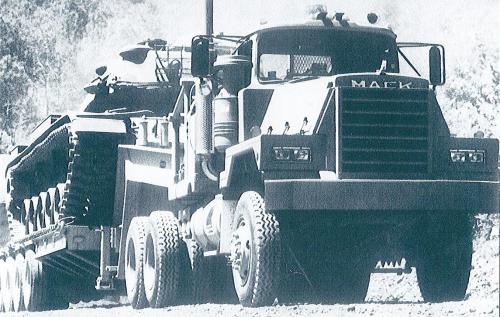
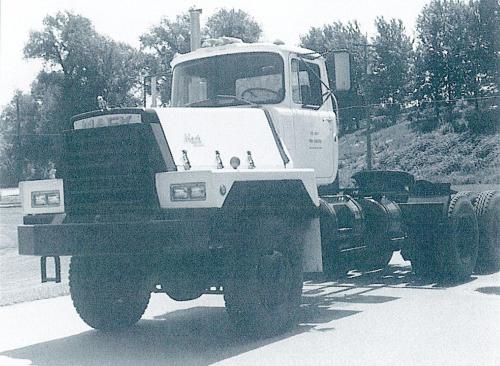
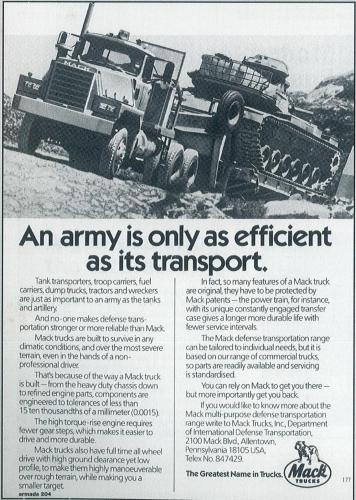
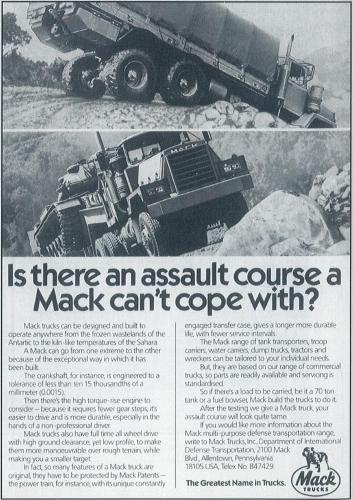
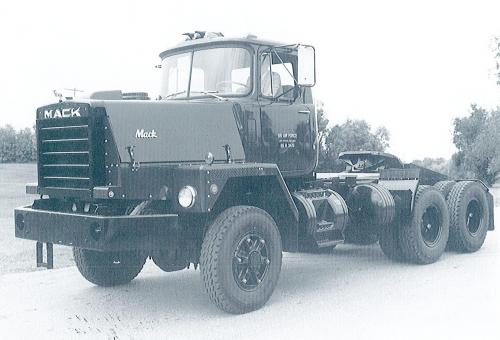
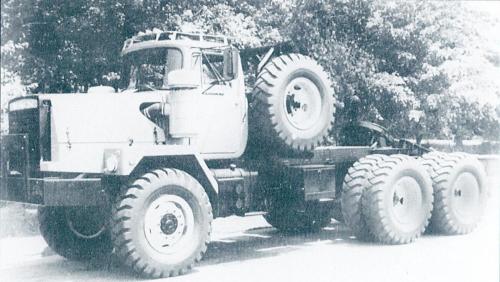
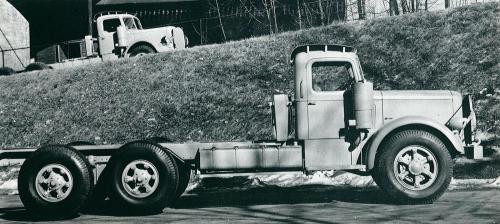
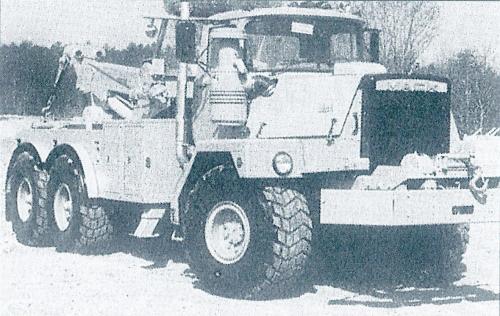
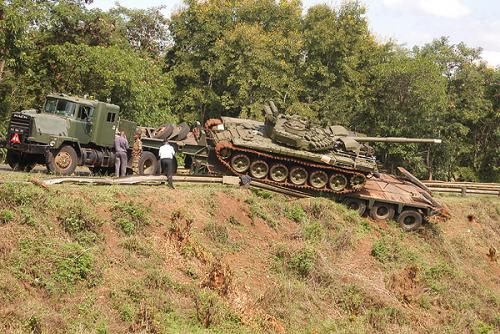
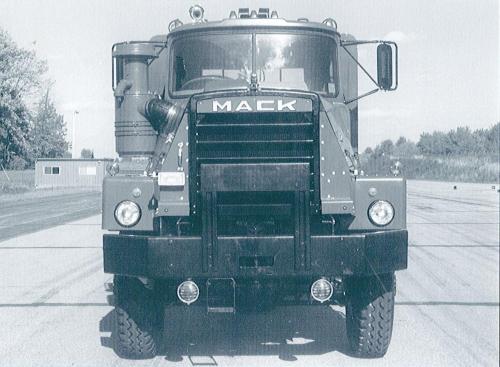
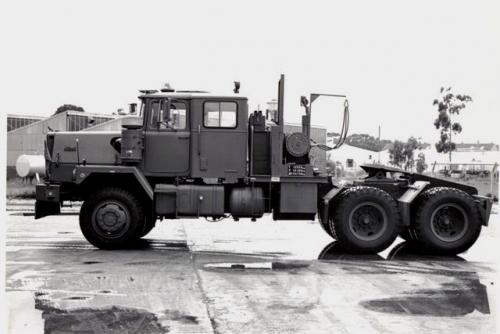
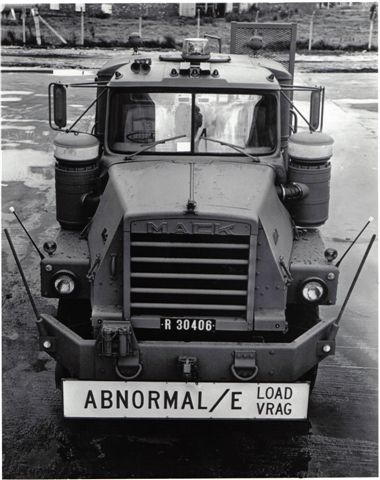
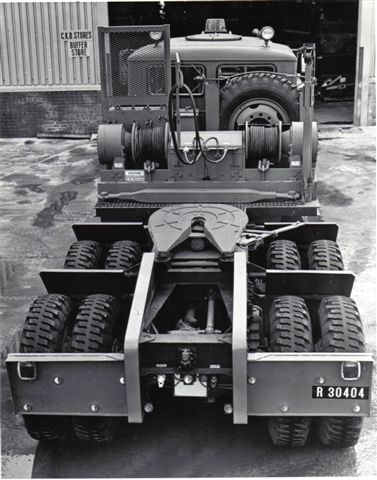
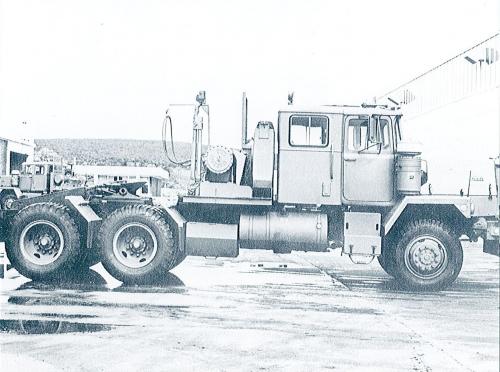
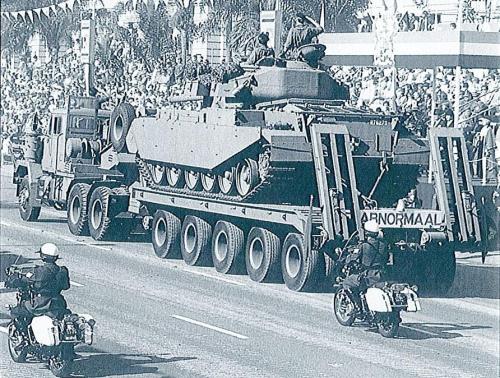
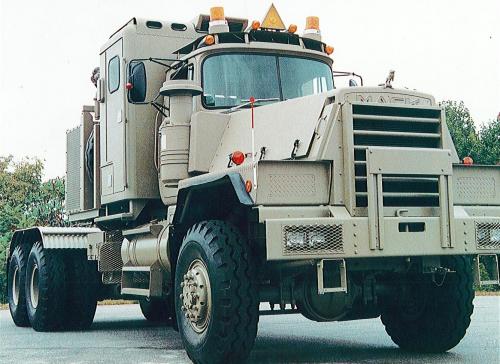
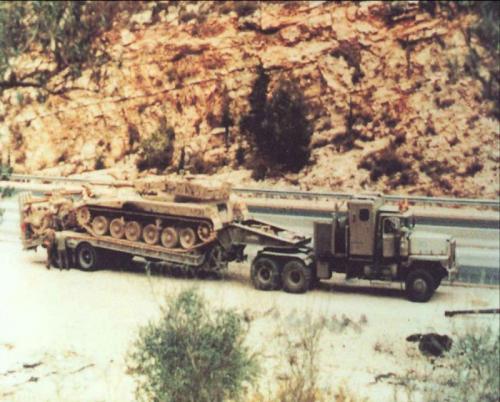
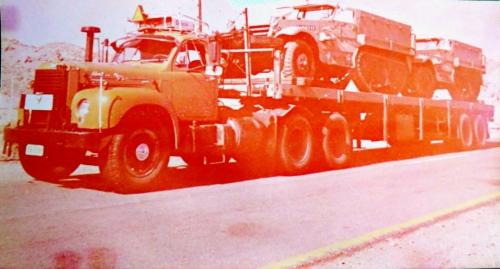
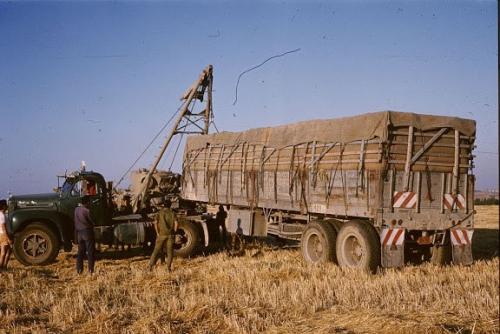
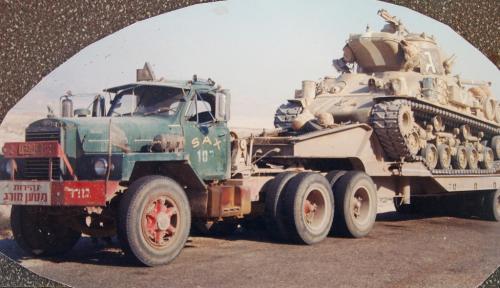
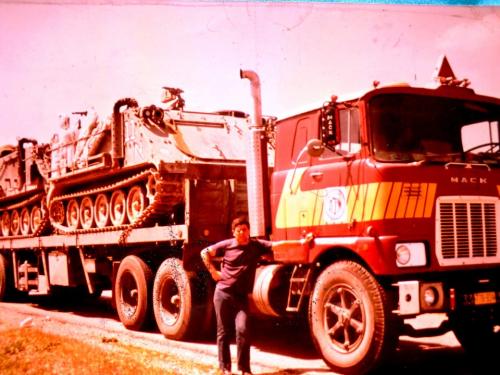
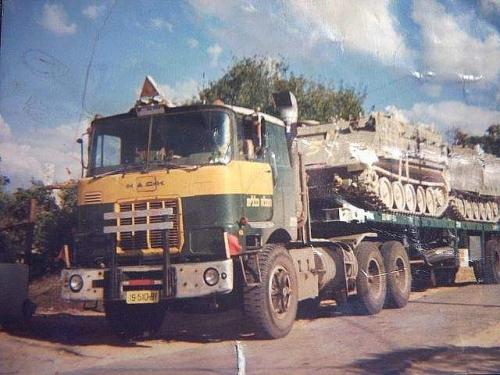
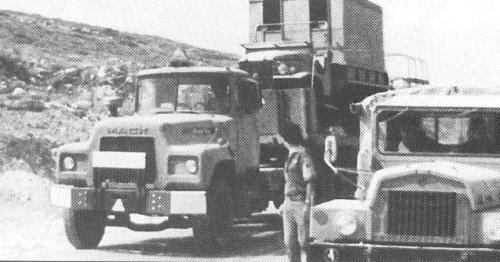
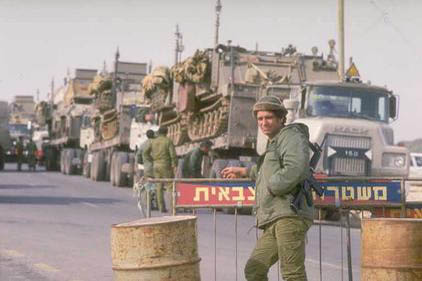
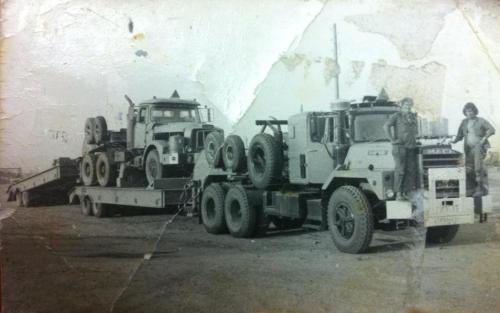
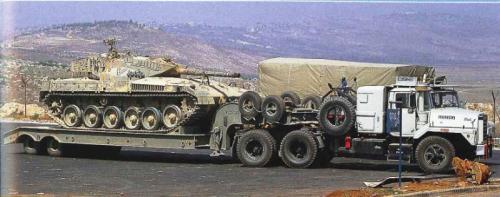
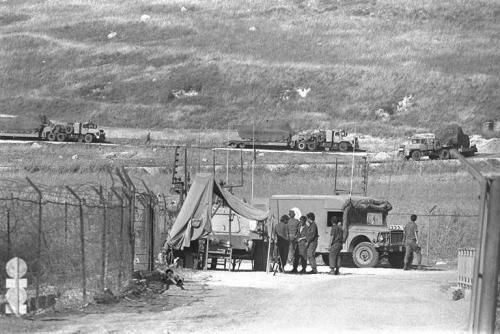
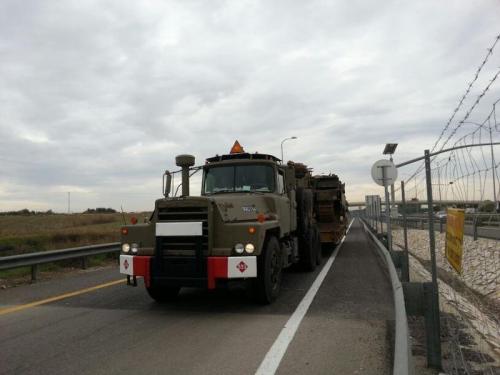
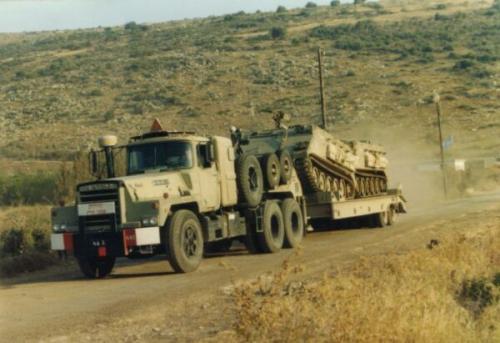
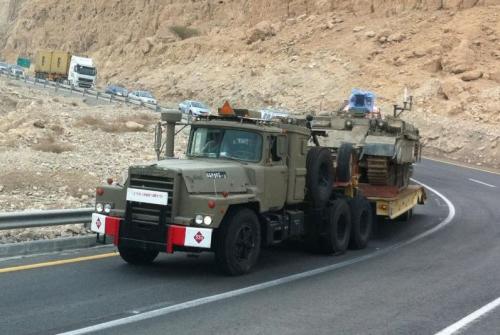
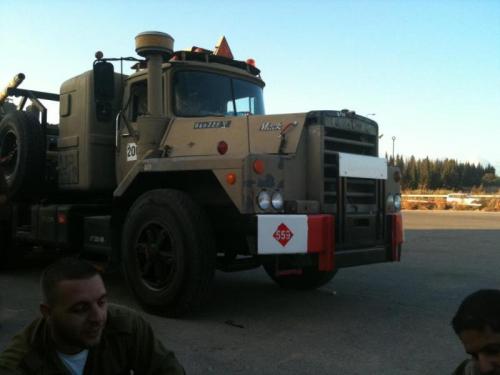
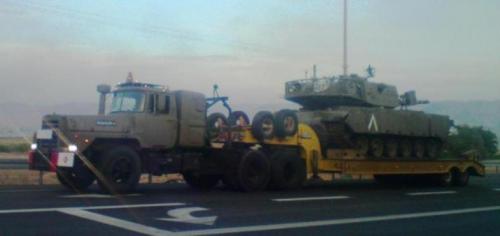
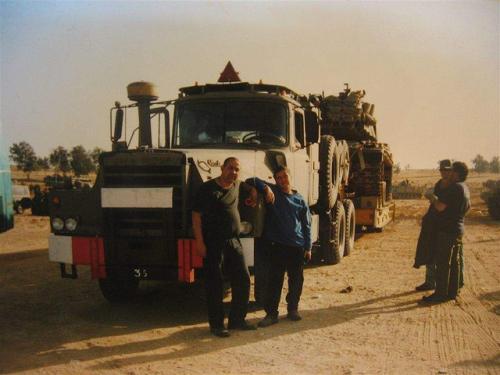
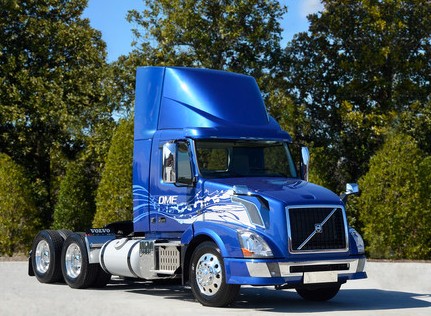
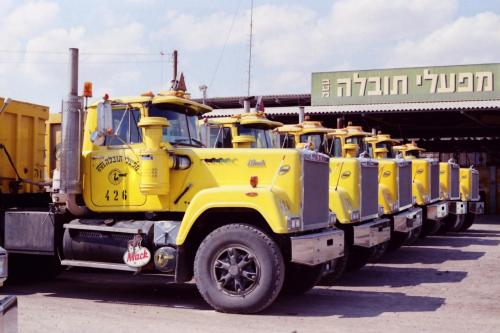
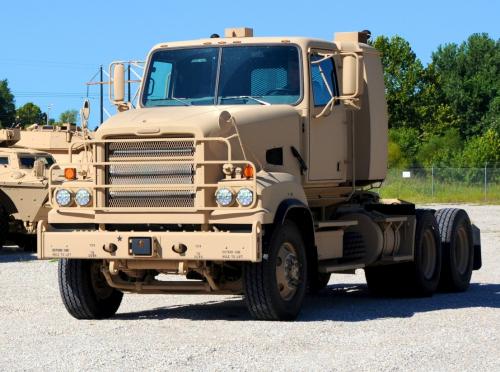
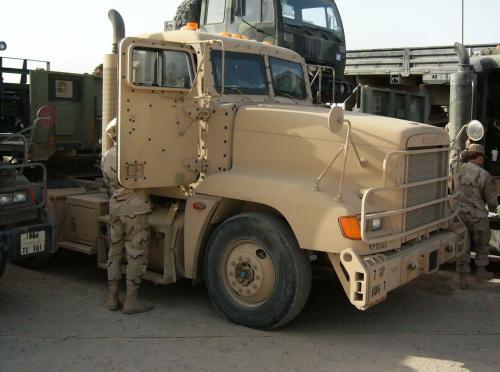
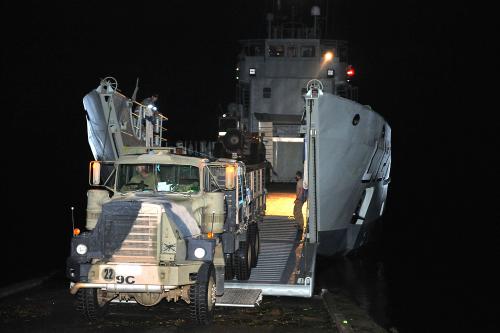
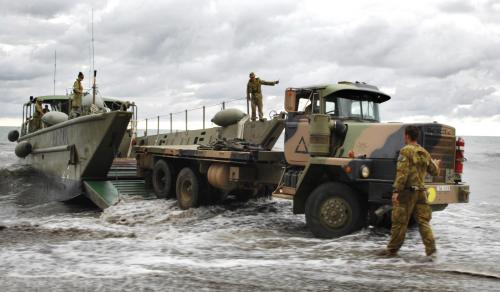
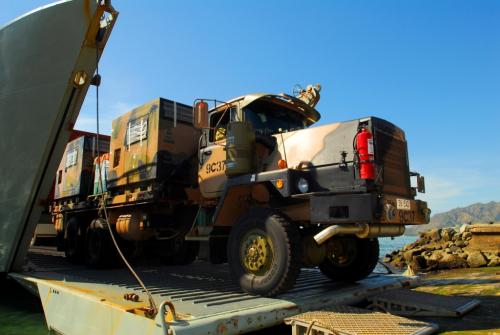
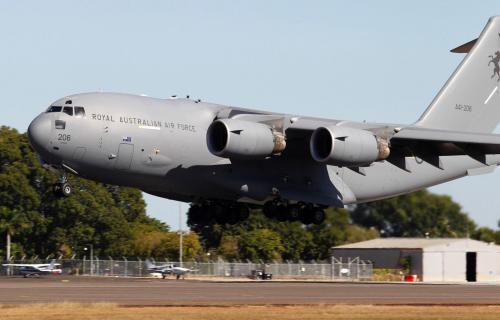
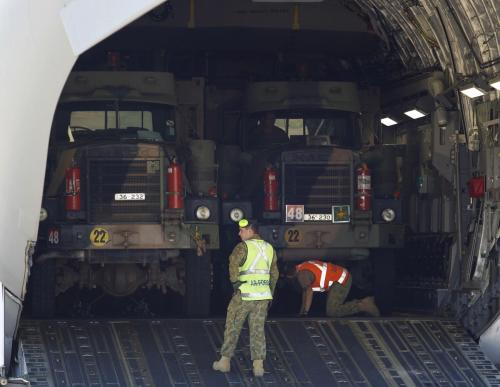
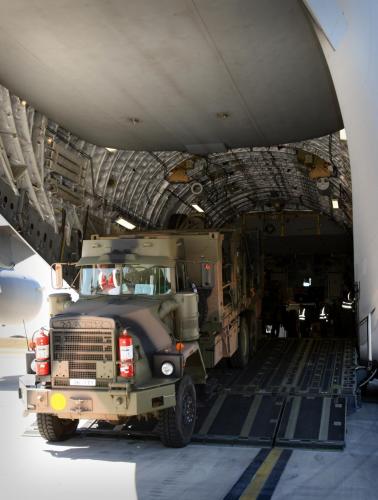
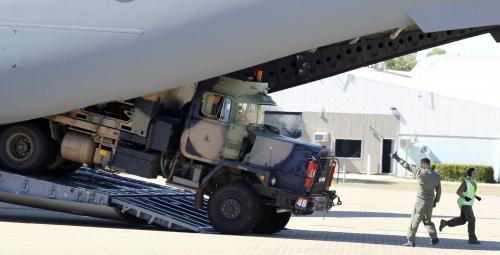
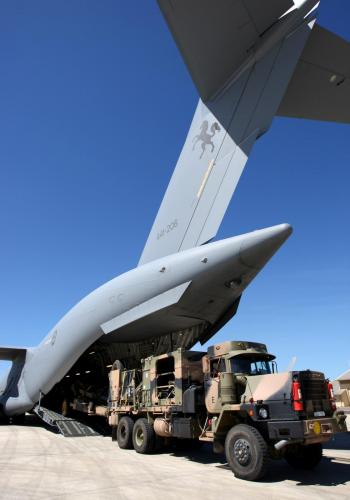
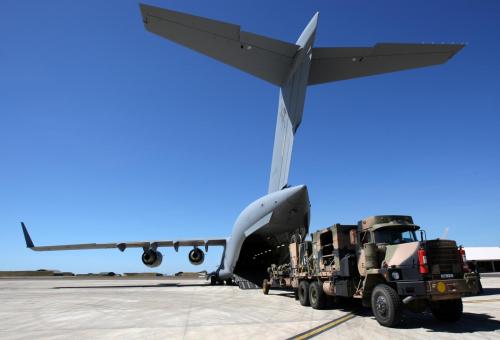
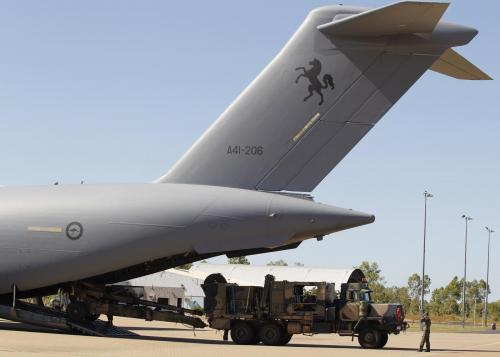
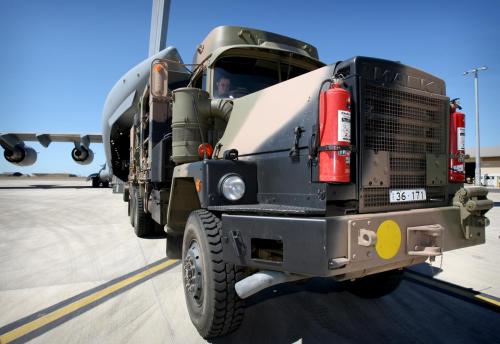
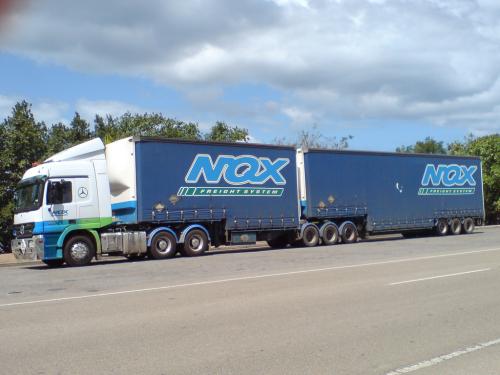

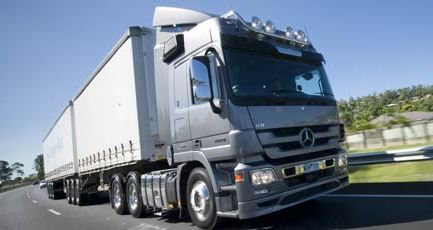
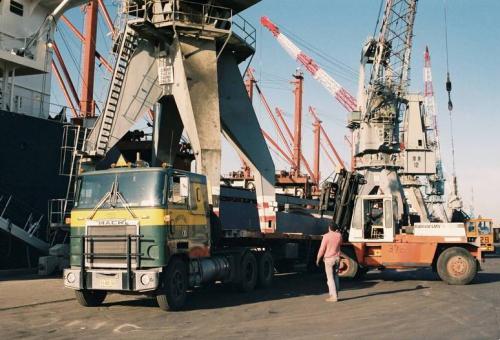
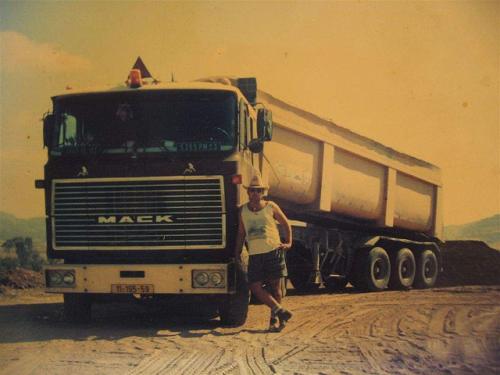
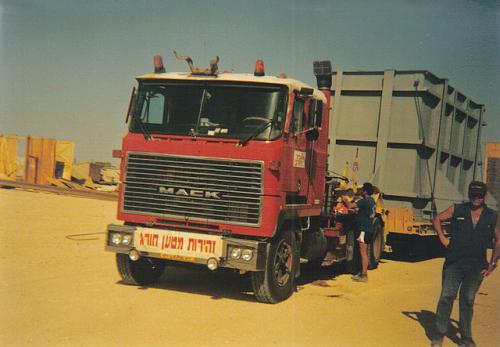
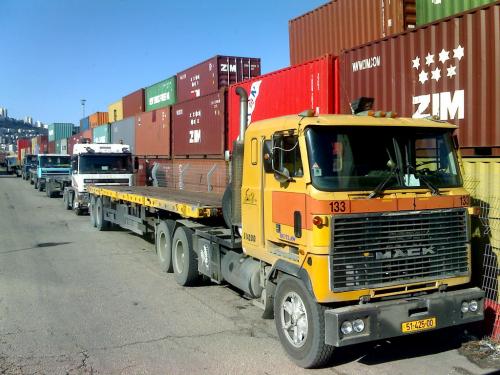
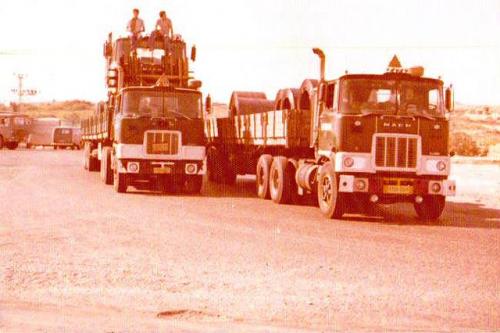
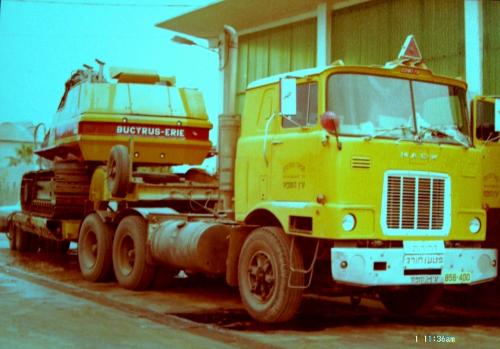
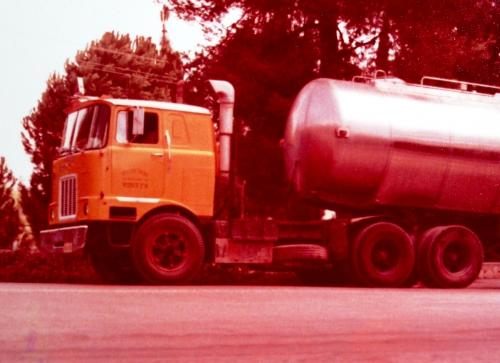
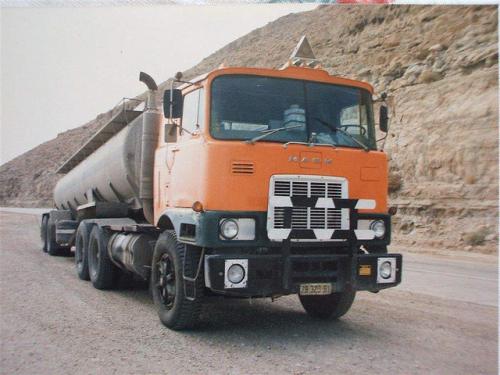
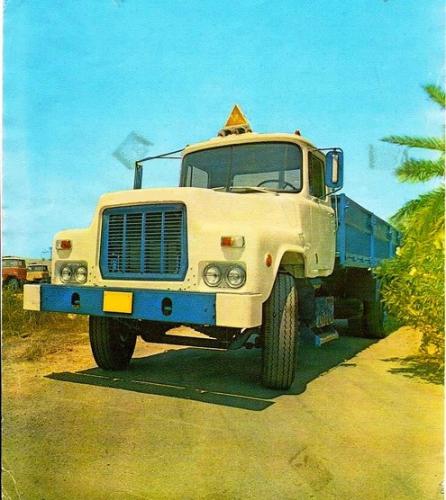
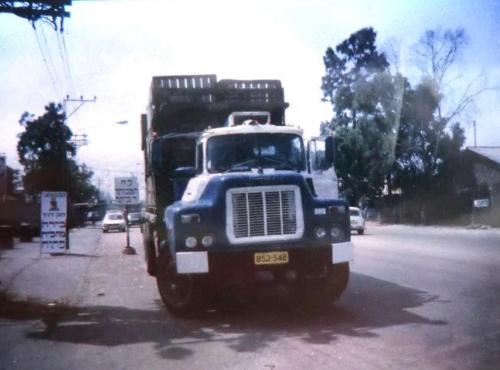
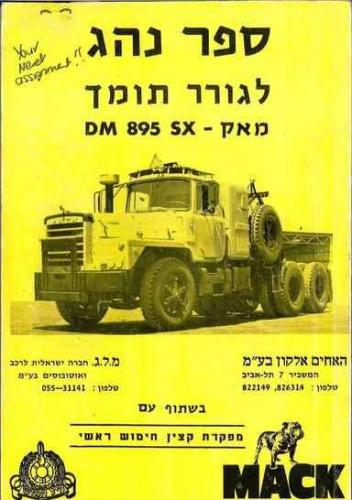
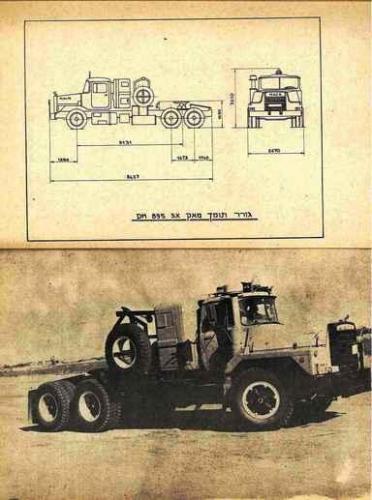
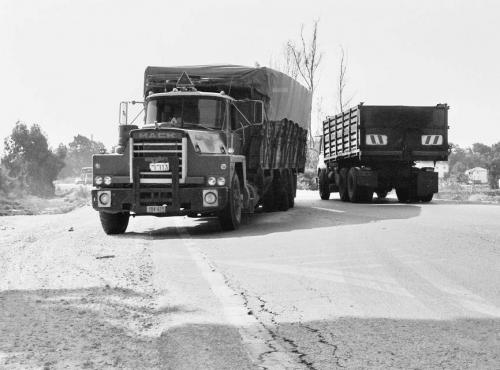
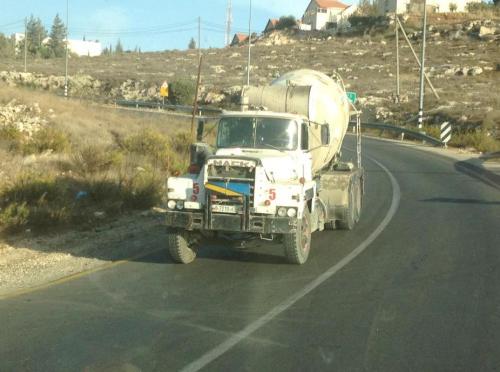
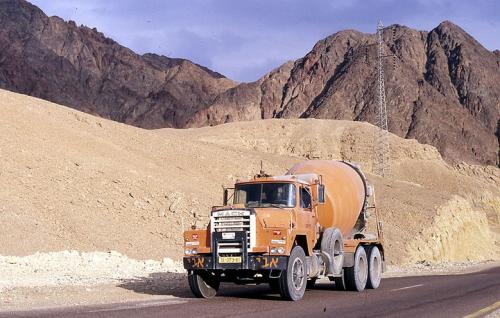
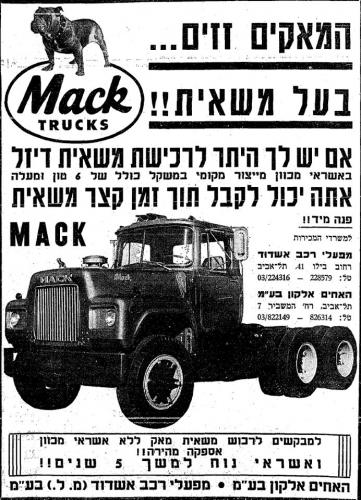
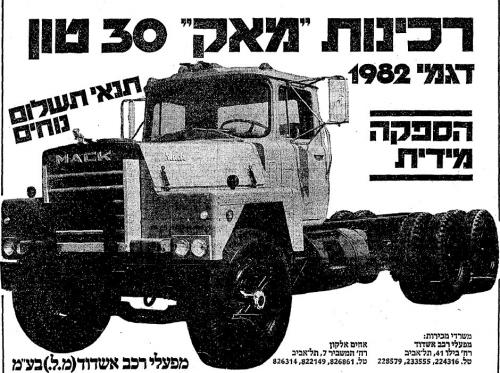
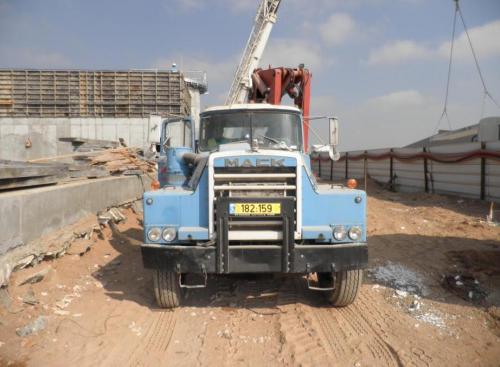
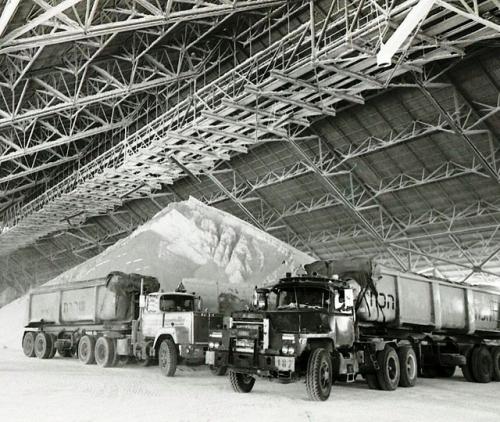
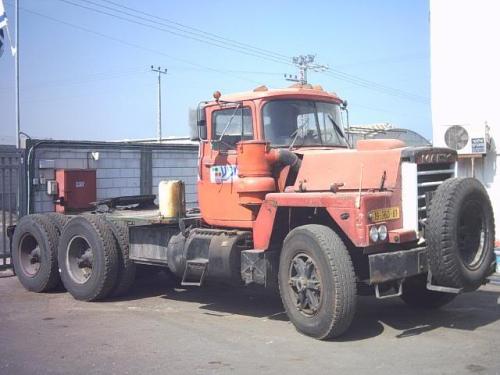
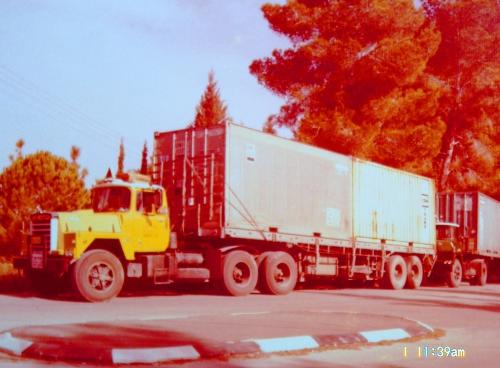
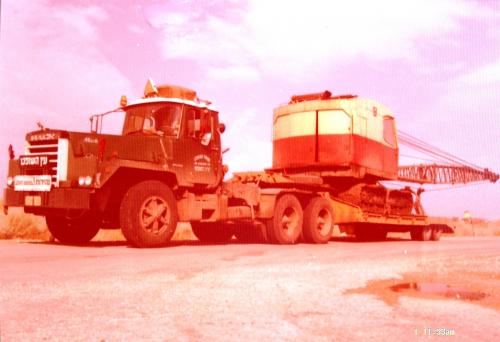
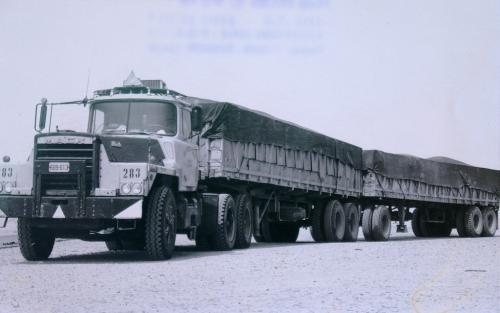
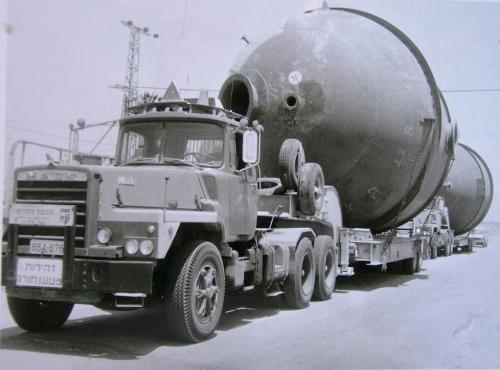

Navistar Reports Second-Quarter Loss
in Trucking News
Posted
Transport Topics / 6/10/2013
Navistar International Corp. reported a fiscal second-quarter loss of $374 million, or $4.65 per share, for the period ended April 30. It's more than double the prior-year period loss of $172 million, or $2.50 per share, citing weak demand.
Revenue fell 23% to $2.53 billion from $3.26 billion as Navistar's sales slumped during a transition to tractors with selective catalytic reduction, or SCR, after treatment.
The truck division’s operating loss more than doubled to $109 million, and the engine unit had a $138 million operating loss.
“We are not satisfied with our overall financial results this quarter, but we are pleased with the continued progress we made in a number of areas on our turnaround plan,” CEO Troy Clarke said in a statement.
Navistar’s loss from continuing operations was $353 million, or $4.39 per share, compared with $138 million, or $2.01 per share.